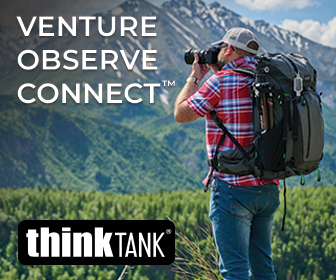Nikon D3500 Review
Nikon D3500 Introduction
The Nikon D3500 is an entry-level DSLR that sports a 24 megapixels APS-C sensor without Anti-Alias Filter in a very lightweight and compact body. It uses the usual electronic-only Nikon F lens mount which is compatible with all AF-S and AF-P lenses, while being able to use AF lenses in MF mode. Essentially, the D3500 is technologically equivalent to the D3400 which precedes yet was made smaller and more efficient with 25% longer battery-life.
This minimalistic DSLR offers basic manual controls with an ISO 100-25600 sensitivity range, 1/4000-30s shutter-speed range, choice of three metering modes and Exposure-Compensation. It has an 11-Point Phase-Detect AF system and can shoot continuously at 5 FPS.
Its Live-View forms the basis for full 1080p HD video at 60 FPS with continuous autofocus capability and a stereo audio-input to capture sound from an external source. As such, the D3500 is targeted at people upgrading from a fixed-lens camera that do not want to lose video functionality while getting image quality and performance benefits of a basic DSLR.
This digital camera review explains the features, usability, image quality and performance of the Nikon D3500.
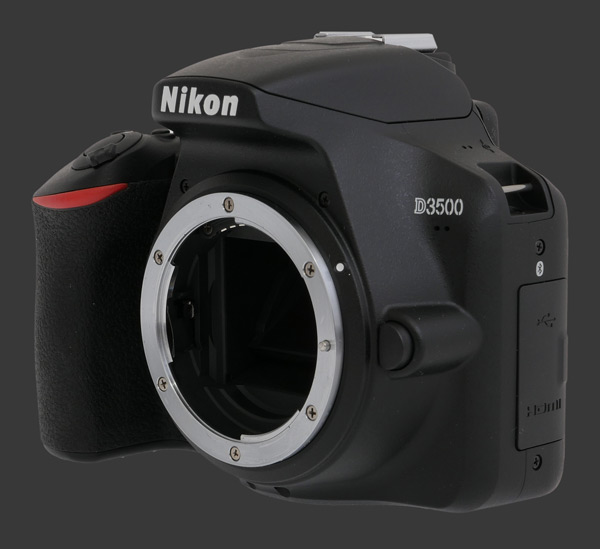
Nikon D3500 Features
Sensor
- 24 Megapixels CMOS sensor
- ASP-C sensor-size, 1.5X crop-factor
- No Anti-Alias filter
- Nikon F lens mount without AFCoupling
Exposure
- ISO from 100 to 25600
- Auto ISO, customizable max and shutter-speed
- 1/4000s to 30s shutter-speeds, plus Bulb mode
- Multi-segment, center-weighed and spot metering
- Standard PASM full manual controls, including Program-Shift
- Two fully automatic mode
- 5 Additional scene modes
- Exposure compensation: ±5 EV in 1/3 EV steps
- Flash compensation: -3..+1 in 1/3 EV steps
- Flash modes: Normal, Redeye, Slow, Slow with redeye and Rear-Curtain sync
- Manual Flash, full to 1/32 power
Image Parameters
- Automatic, Preset and Custom White-Balance
- 7 Sub-types of Fluorescent White-BalanceSodium-Vapor, Warm White, White, Cool White, Day White, Daylight and Mercury Vapor.
- WB Fine-Tuning: 27 steps along A-B axis or 49 steps along G-M axis
- Custom white-balance using immediate capture or reference image
- Customizable Picture Controls:
- 7 Picture Styles
- Sharpening: Automatic or 37 steps
- Clarity: Automatic or 41 steps
- Contrast: Automatic or 25 steps
- Saturation: Automatic or 25 steps
- Hue: 25 steps
- Brightness: 13 steps
- Optional Adaptive D-Lighting
- Optional Noise-Reduction
- Optional Automatic Distortion Correction
- Optional Vignetting Correction, 3 levels
- sRGB or Adobe RGB color space
- JPEG and RAW modes
- Built-in Image Retouching
Focus & Drive
- Single-Shot (AF-S), Continuous (AF-C), Auto AF (AF-A) & Manual focus (MF)
- 11-Point Phase-Detect autofocus system
- 5 FPS Continuous Drive, 11 JPEG or 8 RAW
- 2s, 5s, 10s or 20s self-timers, 1-9 shots
- Quiet Shutter mode
- Optional AF-assist
Display & Viewfinder
- 95% coverage viewfinder with 0.85X magnification
- 3” LCD 920K Pixels
- Face-Detect & Subject Tracking AF in Live-View
Video
- 1920x1080 @ 60 FPS 1080p HD video capture
- Contrast-Detect Autofocus available
- Two compression levels
- Built-in microphone, 20 levels
- Optional Wind-Filter
- Optional manual-controls
Misc
- Built-in popup flash
- Standard hot-shoe
- Single control-dial
- Customizable AE-L/AF-L button
- Rangefinder manual focus assist
- HDMI 1080p
- USB 2.0
- Bluetooth 4.1
- Lithium-ion battery
- SDXC memory support
Nikon D3500 Usability - How easy is it to use?
With a combination of compact design and lightweight materials, the Nikon D3500 is currently the lightest DSLR on the market. The AF-P kit lens supplied with this DSLR is also extremely compact due to its collapsible design and very lightweight given its plastic lens mount. Together, the whole package feels rather light yet well put together. It has a narrow but deep grip that makes the camera easy to hold securely. The shoulder strap conveniently connects to recessed eyelets which puts them out-of-the-way.
On top of the grip, there is a standard two-stage shutter-release with a nice amount of travel and distinct halfway point. Nikon shutter-releases are very good and this one is no exception. It is mounted at a slight angle for added comfort. Since the camera itself is not so tall, there might not be place for all fingers to hold the grip but the thumb falls very nicely on the control-dial which is discussed just below.

There are a minimal set of controls on the top-plate, all packed to the right of the viewfinder and builtin flash housing. The camera has very little left shoulder which is one reason it is so compact, so there is no room on the other side for more controls. Around the shutter-release, there is a two-position rotating power-switch. Right behind it, there is a tiny Video Record button. Given that the D3500 does not have a video mode, this button must be used to start and stop video capture.
Also behind the shutter-release and the right, there is a typical Exposure Compensation button. This is a classic control that offsets EC ±5 stops in 1/3 EV steps by rotating the camera control-dial. In Manual mode, the same EC button allows to change aperture since the only control-dial on this DSLR otherwise selects Shutter-Speed. The control-dial itself is also mounted on the top-plate and has nice distinct detents.
A large mode-dial sits next to the flash housing. It offers the standard PASM exposure modes, plus a Full Auto mode, a Guided Auto mode, 5 Scene modes and a Special Effects mode. The mode dial has form detents to prevent accidental changes. At its base, there is a spring-loaded Live-View switch. It engages or disengages Live-View which is required to record video. Otherwise, the Video Record button does nothing.
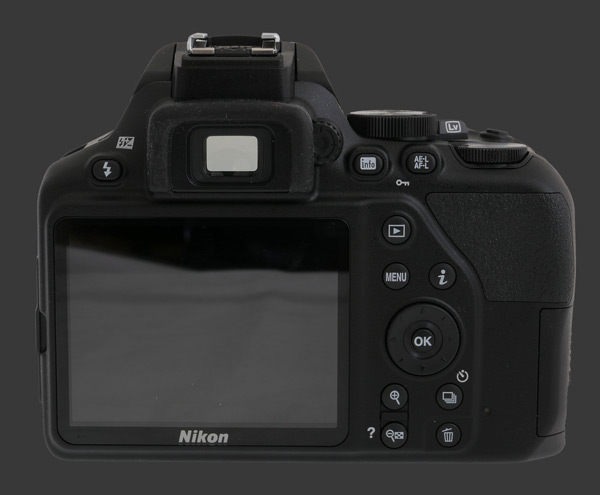
The back of the Nikon D3500 features a 3" LCD with 920K pixels. It starts near the left edge of the camera, leaving no room for controls on that side, which most Nikon DSLRs have. Instead, a good number of controls are packed along the right edge of the display with the outer side of the back left empty to allow for a secure grip. The advantage of this layout is that nearly everything can be reached with one hand.
All remaining controls are found on the back of the camera. At the top-left corner, there is a Flash Release button which can also apply Flash Compensation when used in conjunction with the control-dial. Next to it, there is a rather small OVF with partial 95% coverage and 0.56X-equivalent magnification, although it is quoted as 0.85X which accounts for the crop-factor. The view is small and dim which is certainly the main usability issue with this and other tiny DSLRs. To its right, there is an Info button which toggles the information status display shown on the LCD screen. An AE-L/AF/L button next to it can be customized to lock exposure, focus or both.
Starting at the top, to the right of the LCD, there is a Playback button which behaves as usual. This camera is Shooting Priority, so all that is needed it to tap the shutter-release to exist Playback mode. The Menu button is a little lower. Again, it works just as expected. To the right of Menu, there is an i button which shows an interactive control panel. While this type of interface is quite common, this one is particularly inefficient. Press the i button toggles the panel on and off. The 4-way controller just below is used to select an option to change. There are 12 with a number of common functions to choose from. The main slow-down though is that the control-dial cannot be used to change the setting. Instead, OK must be pressed and then the 4-way controller must be used again to make a selection, followed by another press of the OK button to confirm. Failure to do so exits the panel without changing anything.
A 4-way controller with central OK button normally selects among 9 AF points or is used to navigate the menu system and interactive control panel. There are 4 buttons bellow it, arranged in two pairs. The left pair is to zoom in and out of images in Playback mode. The top of these does nothing in Capture mode but the bottom one brings up a quick tip. The right pair works in reverse. The top one brings up a 4-item menu for Drive Modes: Single-Shot, Continuous, Quiet and Self-Timer. Unfortunately, the Self-Timer resets after each use which gets annoying when shooting from a tripod. The bottom button does nothing in Capture mode but prompts for Deletion in Playback mode or during Instant Review. There are actually several customization option for the Self-Timer but only one is shown. The Setup menu must be used to change the Self-Timer.
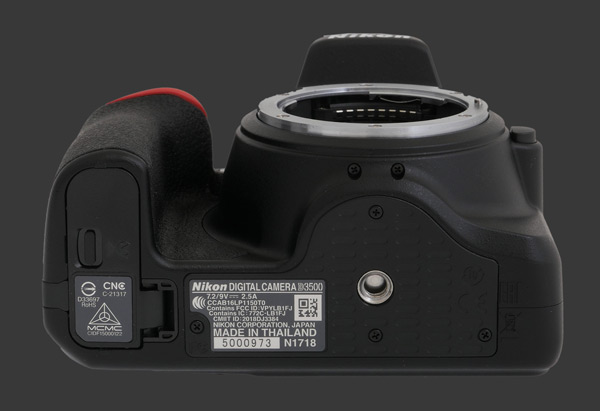
There is a single SDXC memory-card slot behind its own door on the grip-side of the camera. This is nice to change memory-cards while the camera is mounted on a tripod. A door at the bottom of the camera gives access to the Lithium-Ion battery which powers the D3500. Also on the bottom, there is a standard tripod mount centered with the optical axis of the lens, which is ideal for panoramic photography.
Overall, the Nikon D3500 is comfortable and easy to use yet not very efficient. A number of controls are under-used and could have been better taken advantage of. For someone who just wants to get DSLR-quality photos without trying hard, it is sufficient though.
Nikon D3500 Performance - How well does it take pictures?
Ultimately, it is image quality that makes a camera worth buying. For an SLR, image quality greatly depends on the lens. While color, noise, exposure and dynamic-range are properties of a camera, distortion, vignetting and chromatic aberrations are properties of the lens. Sharpness and contrast depend on the weakest link. That is, the camera cannot capture more details than the lens lets through. Conversely, it is quite possible for a lens to transmit more details than the sensor can capture.
The 24 megapixels APS-C sensor used in the D3500 is quite demanding and requires lenses with high resolving power. This means that it performs better with Nikon's premium lenses rather than typical kit lenses. Fortunately, Nikon recently introduced their Nikkor AF-P DX 18-55mm F/3.5-5.6G VR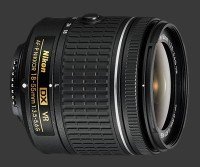
Nikkor AF-P DX 18-55mm F/3.5-5.6G VR that performs significantly better than the Nikkor AF-S DX 18-55mm F/3.5-5.6G VR II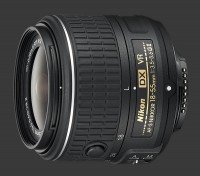
Nikkor AF-S DX 18-55mm F/3.5-5.6G VR II supplied as kit lens since 2014. While the latter should b e avoided at all costs, the new AF-P lens performs quite reasonably with good center sharpness and a more more gentle softening towards edges. To get the most out of this camera, we used a Nikkor AF-S 24-120mm F/4G ED VR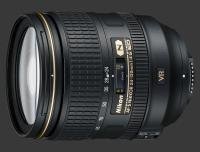
Nikkor AF-S 24-120mm F/4G ED VR full-frame lens to produce the indoor ISO crops for this review.
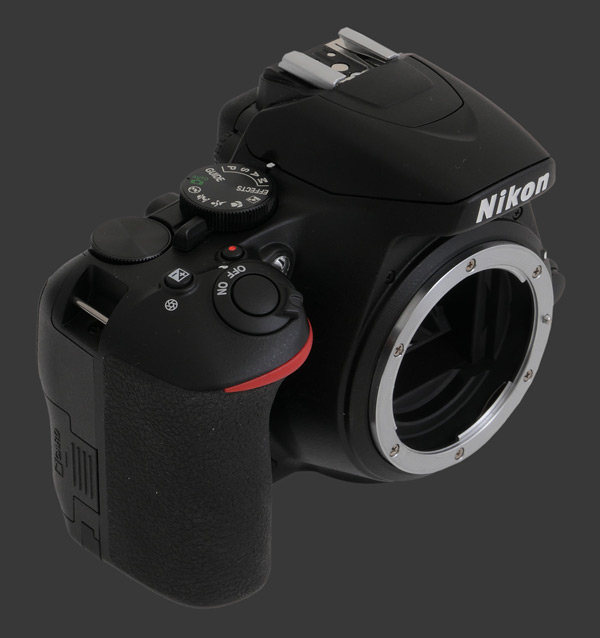
Image Noise & Sharpness
Image quality from the Nikon D3500 is quite reasonable. Given that this entry-level DSLR does not have an Anti-Alias Filter, it can capture more details than many competitors when combined with a sharp lens. When Noise-Reduction is turned off, sharpness stays more consistent as ISO increases, at least until mid-range sensitivities.
Noise levels start low, which in 2019 is a given for any DSLR or mirrorless digital camera, and remain so until ISO 800. At that point, it becomes barely noticeable with minimal impact on maximum print size. One can produce some nice-looking moderately large prints at these low sensitivities. Sharpness, contrast and color stay virtually identical within the ISO 100-800 range.
ISO 1600 shows some very fine luminance noise. It damages the finest-details yet would only be noticeable on larger prints. Color and contrast though stay quite consistent. The next stop though, ISO 3200, takes a hit in terms of image quality. Noise levels still appear low but details get eaten away by noise reduction. This reduces a little potential print sizes but most typical sizes will still look good. Smearing noise in shadow areas, however, causes contrast and dynamic-range to drop noticeable compared to ISO 1600.
Every stop higher increases noise, as it does on any digital camera. On the D3500, the jump to ISO 6400 is quite high which makes image lose plenty of details. ISO 12800 is only a little worse with both these sensitivities usable for small prints or online use. ISO 25600 is extremely noisy with heavy color grains and a complete loss of fine details, That ISO is best avoided.
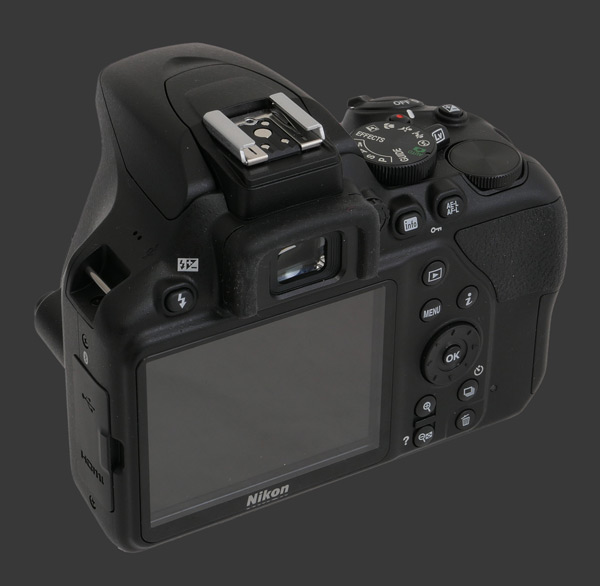
Metering & Dynamic Range
The Multi-Segment metering of this DSLR, which Nikon calls Matrix, is surprisingly good. Most entry-level tend to produce overly bright images that are printable despite lots of highlight clipping yet the D3500 shows a much more conservative approach. This renders some scenes darker than expected but captures more tonality in highlights. It is sometimes still necessary to apply EC but more than minor over-exposure is rare under typical conditions.
Dynamic-range of the Nikon D3500 is average for an entry-level DSLR, particularly one with such small pixels. Many natural scenes exceed the dynamic-range of this digital camera and so there is frequently shadow clipping. Scenes with artificial lighting are a but more problematic given their sharp shadows makes for extreme contrast.
Color & White-Balance
There are 7 Picture Control styles, each can be modified in terms of sharpness, clarity, contrast, brightness, saturation and hue. Theses image parameters are very fine-grained which is unusual for an entry-level model. There are 37 levels of sharpness, 41 of clarity, 13 of brightness and 25 for each of contrast, saturation and hue. This makes image rendition extremely flexible. The Neutral style has good color accuracy but looks excessively dull.
Optical output is achieved starting with the Standard style and adjusting Hue to +1, Saturation to -½, Contrast to -½, Sharpness to +3½ and Clarity to +2. The clarity setting affects mid-range micro-contrast which makes images look sharper without adding sharpening artifacts. Sharpness has a default of +3 which is quite good and only needs a small boost to get that extra crispness.
The D3500 really struggles with Automatic White-Balance. It renders natural light neutral but has trouble with most artificial lighting, even more so when it is dim. There is often a strong orange cast left in indoor scenes and Preset WB does not often manage to compensate for it. Custom WB and Fine-Tuning greatly help though but the D3500 as trouble measuring color-temperature directly when light levels are low.

Autofocus & Speed
Compared to other entry-level offerings, the Nikon D3500 is impressive in terms of speed. Operations get a nearly instant response, including the shutter-lag which is followed by a very brief blackout. This camera does not have a focus motor, so it relies on lenses to perform AF. This means that focus speed can be extremely variable. Particularly, with the supplied kit-lens, the autofocus is on the slow side. Switch it for an AF-S lens and it becomes quite reasonable.
Performance of the D3500 is characterized by the following measurements:
- Power On: Instant. Excellent.
- Power-Off to First-Shot: 1s. Superb.
- Autofocus: ¼ - 1s. Heavily depends on the lens. Good to slow. Focus confirmation is instant though.
- Shutter-Lag: Nearly instant. Good.
- Blackout: Very short. Really good.
- Shot-to-Shot: 2/3s. Average.
- Video Recording: Just over ¼ to start, instant to stop. Quite good.
- Power Off: Instant, excellent.
This DSLR performs very well in nearly all areas. Shot-to-shot speed is the only consistently average performance, while autofocus can be quick or slow. It definitely lacks consistency. During the review period, the D3500 missed focus several times rather than giving up in low-light. Given that its viewfinder is so small, it is difficult to see when that happens since it does not miss by much. While the D3500 lacks a video mode which is the downfall of many digital cameras, this time Nikon managed to get the camera recording very quickly.
The Nikon D3500 is Shooting-Priority which lets it return instantly to Capture mode from Playback by touching the shutter-release. The only time it takes longer is when shooting in Live-View. From there, exiting Playback takes just a little more time. The internal buffer of the D3500 is very small, holding only 11 JPEG images or 8 RAW files at most.
Power consumption has been highly optimized on the Nikon D3500 which can manage an incredible 1550 shots-per-charge from a small proprietary battery. Without using the built-in flash, even more photographs can be taken without changing battery.
Nikon D3500 Conclusion

This entry-level DSLR is nearly identical to its predecessor which is in-turn very similar to models before it. The 24 megapixels APS-C CMOS sensor used by the D3500 produces nice images with very good sharpness, not much noise and reasonable color. Its dynamic-range is average but the multi-segment metering system is tuned to preserve highlights which minimizes clipping due to over-exposure.
The D3500 brings highly detailed control over image parameters which is usually found on high-end Nikon DSLRs and mirrorless. This allows the photographers to fine-tune rendition and obtain more pleasing results straight out of the camera. The only image parameter that this DSLR struggles with is White-Balance. The Auto WB algorithm works well in bright natural light yet fails often under artificial lighting. This can be corrected with Custom WB but this is a more complex process that target users are unlikely to turn to.
Autofocus on the D3500 can be very fast with a good lens. Under ideal conditions, the camera locks focus in less than ¼ seconds. This gets slower when light is low and even more so with a slower lens. The AF-P lens included with most kits lens is designed for compactness and smooth focus transition rather than speed. However, optically, it has greatly improved compared to other kit lenses.
Although not equipped with action features, this is a rather fast entry-level DSLR. The camera responds instantly to all buttons and dials, including the shutter-release that shows very little lag and a short blackout. Ergonomically though, this model is not so efficient to use and requires more button presses than usual, despite offering very few customization options.
Where Nikon really managed to surprise is in terms of video response. Even though there is no dedicated video mode on this DSLR, it begins recording quickly and stops immediate when needed. Output quality is good with smooth motion and very few artifacts.
The bottom line is that the Nikon D3500 offers DSLR-quality in a very compact and lightweight package. This puts some limitations on usability and features but can be quite useful to those who are looking to replace a point-in-shoot to get higher image-quality using mostly automatic modes.
 |
Please Support Neocamera
All information on Neocamera is provided free of charge yet running this website is a huge endeavor. Purchases made via affiliate links found throughout the site help keep it running and up-to-date. There is no additional cost to you, so please consider buying via these links to our affilates:
If you found any information on this site valuable and did not purchase via our affiliate links, please considering donating via PayPal:
Any amount will be greatly appreaciated. Thank you for your support!
Nikon D3500 Highlights
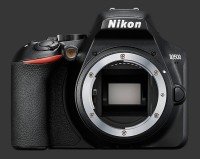
Sensor-Size: 24 x 16mm

Actual size when viewed at 100 DPI
| 24 Megapixels DSLR | ISO 100-25600 |
| Nikon F Mount 1.5X FLM | Shutter 1/4000-30s |
| 95% Coverage Medium Viewfinder | Full manual controls, including Manual Focus |
| 5 FPS Drive, 100 Images | Custom white-balance |
| 1920x1080 @ 60 FPS Video Recording | Spot-Metering |
| 3" LCD 920K Pixels | Hot-Shoe |
| Lithium-Ion Battery | |
| Secure Digital Extended Capacity |
Updates
2025.01.18

Fujifilm GFX 2025 Lens Roundup
Lens Review roundup of Fujifilm GFX Medium-Format lenses. Quality, performance and handling of the GF20-35mm F/4R WR, GF30mm F/3.5 Tilt-Shift and the GF55mm F/1.7.
2024.11.18

Best 2024 Photography Gifts for Every Budget
Great gifts for photographers and photo enthusiasts selected for every budget among the best products of 2024.
2024.08.07

Eye Protection Tips for Professional Photographers
The four main considerations for professional photographers regarding eyewear.
2024.07.14

Fujifilm X100VI Review
Flagship fixed-lens compact digital camera with a 40 MP sensor and Image-Stabilization, a first for the series. Retro design featuring dual control-dials, plus direct ISO, Shutter-Speed and EC dials. Its hybrid viewfinder can switch between EVF and OVF mode.
2024.05.09

Fujifilm GFX100 II Review
Flagship 102 Megapixels Medium-Format Mirrorless Digital Camera with 8-Stop 5-Axis IBIS, 8 FPS Drive, 8K Video and 400 MP Super-Resolution capture in a weatherproof and freezeproof body with dual control-dials and dual memory-card slots.
2024.04.03

Fujifilm X-T5 Review
Newest Fujifilm flagship boasting a 40 MP APS-C sensor, 5-axis IBIS with 7-stop efficiency, 15 FPS continuous drive, 6.2K Video capture, dual control-dials and dual SDXC UHS-II slots in a sturdy weatherproof and freezeproof body.
2023.11.20

Best Digital Cameras of 2023
Find out which are the Best Digital Cameras of 2023. All the new Mirrorless Digital Cameras from entry-level to high-end professional.
2023.07.10

Fujifilm X-H2 Review
40 Megapixels APS-C Hybrid Mirrorless Digital Camera with 7-stop IBIS. Fastest shutter ever and 8K video capture. Large builtin EVF with 0.8X magnification and 5.8 MP, plus an Eye-Start Sensor. Packed with features and large number of controls in a weatherproof and freezeproof body.
2023.05.07

Sony FE 20-70mm F/4G Review
Review of the unique Sony FE 20-70mm F/4G lens. The optical zoom of this lens spans ultra-wide-angle and medium focal-length coverage, making it one of the most versatile Full-Frame lenses on the market.
2023.01.15

Huion Inspiroy Dial 2 Review
Review of the Huion Inspiroy Dial 2 tablet, a medium sized drawing surface with dual dials and customizable buttons. Connects via USB-C or Bluetooth 5.0 with Windows, Linux and Android support.
2022.12.08

How to Pack for a Photo Trip
Find out how to pack for a travel photography trip, carry your gear safely while meeting airline regulations.
2022.11.13

Best Digital Cameras of 2022
The best digital cameras of 2022. A short list of the most outstanding models in their respective categories. Choose one for yourself or as a gift.




